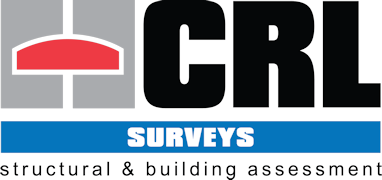CRL Surveys have increasingly encountered buildings and structures that have already been repaired and refurbished, with some either fitted with impressed current cathodic protection systems (ICCP) or with the repairs including sacrificial anodes or other galvanic systems.
ICCP systems have now been in use on concrete and steelwork buildings and structures for over 50 years. However, in some cases where ICCP systems have been installed they have eventually been forgotten about and have fallen into dis-repair, as a result of changes in staffing and ownership, together with the inevitable passage of time. In some cases telephone lines, for remote monitoring, have been disconnected and the systems either inadvertently disconnected or even short-circuited by subsequent 'building work'.
CRL Surveys, in cooperation with certified Institute of Corrosion (ICorr) specialists, can check your ICCP system, the functionality of the 'hardware', or wiring and connections to the building or structure and also the 'software', or operating and monitoring system.
In our experience, where the original system was installed by a reputable contractor, in most cases the 'hardware' can retain functionality for many years, despite disconnection, but the 'software', particularly the operating system, like most IT, rapidly becomes obsolete and after an extended period of disconnection cannot be re-booted.
However, this generally means that the expensive bit, the 'hardware', may only need re-connection, with the 'software', including the monitoring system, only needing an upgrade.
CRL Surveys can then, in cooperation with certified Institute of Corrosion (ICorr) specialists, take on the monitoring and maintenance of your ICCP system, providing peace of mind that your building or structure is being maintained corrosion-free.
Galvanic corrosion control systems, such as sacrificial anodes, have now been in use for over 20 years, with questions now being increasingly asked about the levels of residual protection left within older installations. In some cases, e.g. where the concrete surfaces were coated following repair, residual levels of protection will, at least partially, be a function of the maintenance regime for and condition of the protective coatings. In these cases the anodes may not have worked too hard, as rates of corrosion naturally reduce as a result of the concrete dries out (as long as the functionality of the coatings had been maintained). However, in other cases, where the surfaces were left un-coated the anodes will probably have worked harder to maintain passivity of the reinforcement and the levels of residual protection will be both more important, to maintaining passivity, and lower.
CRL Surveys can undertake investigations to evaluate the levels of residual protection. Such investigations will be partially destructive, and 'snapshot', involving the exposure of representative anodes, inspecting condition of both anodes and connections, measuring galvanic current and in some cases breaking open anodes to assess quantities of residual metal and corrosion product. We will obviously make-good afterwards, but this could not be considered as invisible mending.



